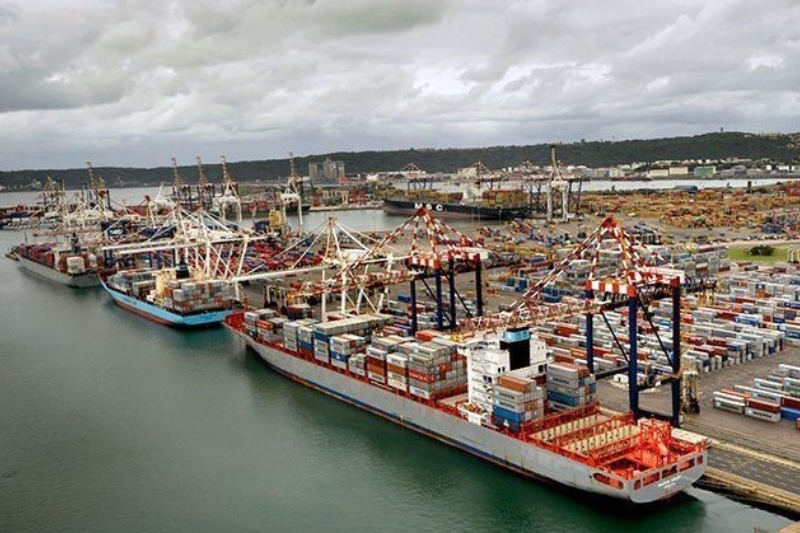Government Intervention for Transnet: A Vital Rescue Mission
In a bold move to salvage the ailing state-owned Transnet firm, the South African government has pledged 47 billion rand (2.3 billion euros) to bolster the struggling giant. This injection aims to alleviate the turmoil gripping the port of Durban, a crucial hub managing a substantial chunk of the country’s container traffic. The National Treasury’s decision to offer a guarantee mechanism underscores Transnet’s pivotal role in the nation’s economy.
Challenges and Urgent Needs: Port Congestion and Equipment Shortage
The port of Durban grapples with monumental container congestion, exacerbating operational, financial, and governance challenges at Transnet. Industry insiders highlight the pressing need for updated infrastructure, citing the rerouting of ships to Port-Louis in Mauritius as a temporary relief measure. However, the heart of the problem lies in the aged equipment plaguing port operations. While the government’s financial aid is a crucial step, urgent solutions involving modernized infrastructure remain imperative for sustained efficiency.
Keep Reqding
Insights and Concerns: Analysts and Opposition Voice
Analysts, such as Daniel Silke from Political Futures, emphasize that Transnet’s staggering debt restricts its independent borrowing capacity, signaling a dire need for immediate financial support. Silke points out that these challenges demand attention as South Africa approaches general elections, urging for proactive measures beyond mere financial aid.
On the other hand, opposition voices, notably the Democratic Alliance, express grave concerns over the inefficiencies and fiscal irresponsibility plaguing Transnet. Dion George, the finance spokesman, criticizes the government’s safety net, asserting that while it may temporarily address chaos, it fails to tackle underlying systemic issues.
Path Forward: Balancing Financial Aid and Systemic Reforms
The injection of funds provides a lifeline for Transnet, allowing immediate access to crucial repayment obligations. However, as the company grapples with a debt burden of 130 billion rand, stringent collateral conditions dictate access to the remaining allocated funds. The road ahead demands a delicate balance between addressing immediate financial crises and implementing systemic reforms to overhaul governance, combat theft, and modernize infrastructure.
Conclusion
As South Africa braces for general elections, the state’s intervention in Transnet illuminates the intricate nexus between financial exigencies and the imperative for sustained, comprehensive reforms. The injection of funds represents a pivotal moment, yet it underscores the urgent need for long-term, strategic solutions to fortify Transnet’s operational resilience and its critical role in the nation’s economic landscape.

